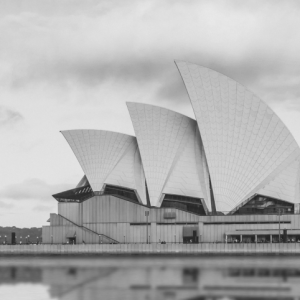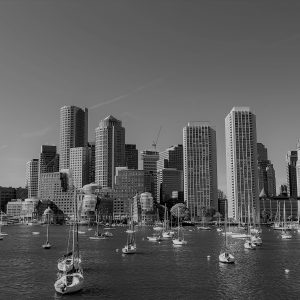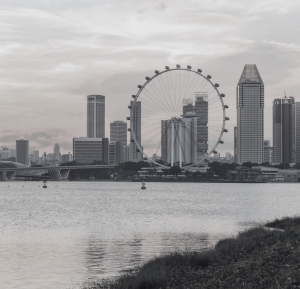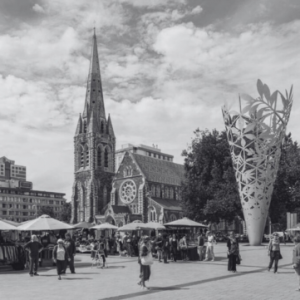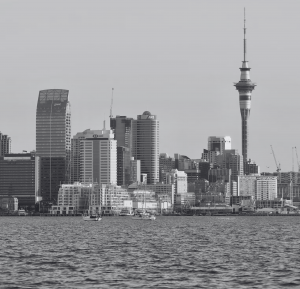What in the World is Going On (in Real Estate Investment Management)?
- 25 Mar 2021
- client
- 2021
We took a global look at how our clients and candidates viewed last year, and opportunity for the year ahead.
As you will see below, sentiment is cautiously optimistic. There have been winners and losers, and this has been demonstrated most clearly when looking across asset class, with some large global themes. Those with existing logistics, data centres and life sciences assets have performed well and also enjoyed continued investment, while retail and hospitality have suffered. Residential and office have been more varied across the globe, based on regional cultural attitudes towards working from home in the longer term.
There is also reason to be optimistic when it comes to investment. Last year, many turned inwards and focused on asset and portfolio management as a form of damage limitation. Funds are well-capitalised but investment volumes were low last year, so there is pressure to invest. The challenge is the usual one – where is there currently opportunity? Where will investment professionals find value?
Capital raising in many countries has also remained strong, with groups reaching large audiences efficiently through video conferencing. However, in some more traditional cultures, fundraising was delayed as face-to-face meetings to forge new relationships proved impossible.
We take a closer look below, thanks to contributions from colleagues across our Sydney, Hong Kong, Dubai, London, and New York/Chicago offices.
What are your clients’ and candidates’ overriding sentiments of last year? Were they able to invest?
Aus: Within Australia, real estate investors largely avoided the macro pressures experienced elsewhere in the world. There has been pain of course, but it has been largely manageable. The visible impact seen elsewhere left Australia with the knowledge it could have been a lot worse. A substantial workforce has returned to Australia and have contributed to Australia’s growth markets such as BTR (multifamily) where the demand for labour was beginning to outstrip supply. As a relatively small economy, predictably Australia’s advisory space has seen the largest negative impact.
Institutional capital has remained available, despite the initial period of uncertainty. This has allowed many investment firms and developers to thrive if they are able to demonstrate flexibility and opportunism. In terms of completed deals, there has been a decrease year on year, but the banks and non-bank lending institutions appear to have suffered the least amount of interruption.
US: Clients investing in specific asset classes (mainly industrial and life science) remained active in 2020. A few even completed deals virtually, not even visiting a lab / life science asset before the purchase! Multifamily investors were also active, particularly in markets that are driving people moving out of cities. In the asset classes mentioned, clients with track records in that space and conviction in a market have had major success capital raising.
Firms that are geographically focused in markets hardest hit by COVID are struggling. Retail (unless grocery anchored), office and hotels are hardest hit.
Lenders have been friendly and government assistance has helped the population, so the COVID pricing many have been expecting to see has not yet happened. There has not been a major market dip, many do not feel there is pressure to sell at low pricing. Investors are waiting for COVID pricing to hit and they are not seeing it. We are seeing the activity from investors in industrial, life science and multifamily, but outside of those areas, the investment activity is low.
Asia: After an initial shock period, most funds tried to continue to deploy capital. Teams spread across Asia were still able to view sites and review deals, however there was caution over actually pulling the trigger on investments, as there was not much movement on price. Those with teams centralised in Hong Kong and Singapore found it difficult to do transactions without anyone on the ground. Instead, there was an emphasis last year on asset and portfolio management.
UK & Europe: The overall sentiment (and the market itself) fluctuated throughout the year. From March to May, the market ground to a complete standstill with the initial lockdown. The focus was getting tight around their assets and for companies to focus on setting their team up from home. We noticed the odd deal happening, but pricing had fluctuated, so many companies wanted to hold fire.
From June to September, we saw a bounce back. People were back in the office and deals were starting to happen. The catalyst for this was the opening of offices and national/European travel.
More recently we have seen an increased volume of deals, but the third lockdown has undoubtedly caused a slowdown once again.
Middle East: GCC family offices appeared to be bullish initially but ultimately held off and switched to preservation mode. Their focus shifted quickly to asset management and keeping occupancy rates high within their existing portfolios. Commercial occupancy rates were challenging pre-pandemic so there was less of a COVID specific impact here, while those with heavy exposure to retail fared worse. Funds were more aggressive on listed equities rather than direct deals.
What are your clients’ and candidates’ views on the year ahead?
Aus: In short, extremely optimistic. There are many conflicting arguments on how office assets will perform over the next six months, which is probably the biggest concern. Retail was already having some issues pre-COVID, so this workforce was already taking stock and managing risk.
It could be argued that those in well-capitalised investment managers have the largest reason to be optimistic at this point. Depending on how quickly the borders can open will dictate levels of immigration, and this has the largest effect on the demand for buy-to-sell residential developments in Australia.
US: Most of our clients have luckily been in asset classes that are active to-date. They are bullish. Being based in Boston has been helpful in a sense, given the drive for lab and life science assets here. There is a level of excitement and growth in Boston particularly right now.
Nationally there have been new strategies popping up in today’s market. GP investors are active and ground-lease strategies have proven to be attractive.
Asia: The general attitude is that we cannot wait around for things to return to “normal”. Groups have capital to spend and there is pressure to do deals. Many investment professionals are now travelling and accepting 2 – 3-week quarantines at the beginning and end of their trips, particularly to China where there is plenty of opportunity.
UK & Europe: Following the new budget & a COVID “road map”, sentiment across the market is looking encouraging. The vaccine is being rolled out at a phenomenal pace, and everyone is expecting a surge in the summer months, following by a likely retraction in the winter.
Middle East: Inward investment is the biggest challenge. Domestically, there are significant opportunities around infrastructure, and regional funds are starting to look at BRICs more seriously. We still think most clients will stick to local investing now, with heavy incentives offered by government to do so.
What specific asset classes or geographies will they look to invest in? What will they not invest in?
Aus: The asset classes seeing the most promising growth trajectory seem to be buy-to-rent, logistics and healthcare. Debt investment funds have performed well in Australia for the last five years and COVID has not left them with any reason to slow down.
Naturally, there is caution around office and retail.
US: Investing in: Industrial, lab / life science and multifamily assets.
Not investing in: Hotel, retail (unless grocery anchored). Most are staying away from office assets, however a few firms with long term, patient capital have started to seek out office assets as a longer-term hold. Others are trying to convert office assets into lab / life science – particularly in Boston, where many firms are converting the bottom seven or so floors to lab/life science.
Asia: Data centres and logistics. For many, logistics was already part of their strategy, so it was easy to focus attentions there. Some funds already had expertise in the data centre sector which they were able to leverage, whilst others sought out operating partners with expertise who required capital. While many considered the data centre sector, most were also cautious to invest given its relative novelty as an asset class.
Geographically, China was the quickest market to recover, and deal volumes were comparatively high, given investment professionals were able to travel within China. Japan and Korea also performed quite well because of strong domestic investments, and they are also seen as relatively “safe” markets.
UK & Europe: “Beds, sheds & meds” seem to be the asset classes on everyone’s lips. We’ve also noticed a surge in credit funds being set up over the past year, likely due to the red tape faced by banks following COVID. It is still too early for distressed plays, but sentiment across the market is that we’re not far off.
For obvious reasons, we see a decline in retail, hotels and office.
Middle East: Hospitality, residential, infrastructure and healthcare are the most attractive. Several investment managers in the UAE have recently announced the creation of venture capital funds to invest into proptech. We’re expecting aggressive medium term growth in this space. Like our sister offices in more mature markets, there is hesitancy on commercial and retail in the medium term as we wait to see whether the city workers’ working week in Europe and North America has truly changed.
How will last year’s events affect the future of real estate investment management (investment, asset management, capital raises, working habits)?
Aus: Globally, Australia should continue to be seen as a strong and stable return. With a strong economy and decisive political decisions made at the beginning of the pandemic, many of our global clients and capital groups have only increased their focus on the Australian real estate investment market. If this demand shows resilience, then the inability to travel to Asia, Europe and North America to forge new capital partnerships wouldn’t have a negative effect.
US: It still remains to be seen how last year’s events will affect the future of investments in the US. Some are worried that there will be an oversupply of some of these hot asset types. Life science assets are the main area of concern for over supply. Some are saying the focus / capital growth in the biotech space will continue to drive that demand, so over supply should not be an issue. There are mixed views in the market to-date. Life Science assets are expensive to build, so an oversupply issue would be of much more concern than with other asset classes. Industrial is an asset class that is often easily converted to another asset type if needed, so even if it was over supplied (which is not a major concern), it is not a costly issue.
Capital raises have been successful in the asset classes mentioned above. Also, Zoom capital raises are in many ways extremely effective, since you can reach out to more potential investors than you can typically meet in person in one day. This new normal of having to work from home has helped some people increase their virtual “face time” with investors.
Asia: Most people in Asia seem likely to return to the office and also travelling should that become possible. Funds with a regional strategy have suffered from being such inter-dependent countries, all locked out from each other, and it seems travel is unlikely to open up until later in 2021.
There is likely to be a lag with capital raising, as another major consequence of not travelling has been the inability to forge new relationships between funds and capital sources. In Asia, whilst many have harnessed the power of video conferences to push through deals, it cannot replace the need for face-to-face interaction to make and maintain relationships, which is so important in many Asian cultures.
UK & Europe: There’s a lot of talk about office downsizing and introducing flexible working. There is a vast amount of capital ready to deploy in the UK and Europe, with most funds waiting to pull the trigger on deploying.
Video calls will be a new way of life, which will likely reduce the travel required.
Middle East: What has become very clear is the need for strong relationship building to increase global investor confidence in GCC funds. Many GCC investors are seeking institutional capital for co-investment opportunities, but without face-to-face meetings the confidence isn’t there on either side yet to execute based on Zoom alone. We expect more physical presences of local funds to open, especially in the US and UK, to address this. We also expect an increase in international travel below senior management so that relationships are strengthened at all levels.
Contributors: Joel Eve (Sydney), Alice Hunt (Hong Kong), Ashley Lucia (New York/Chicago), Nathan Minnighan (Dubai) & Ed O’Hanrahan (London).
